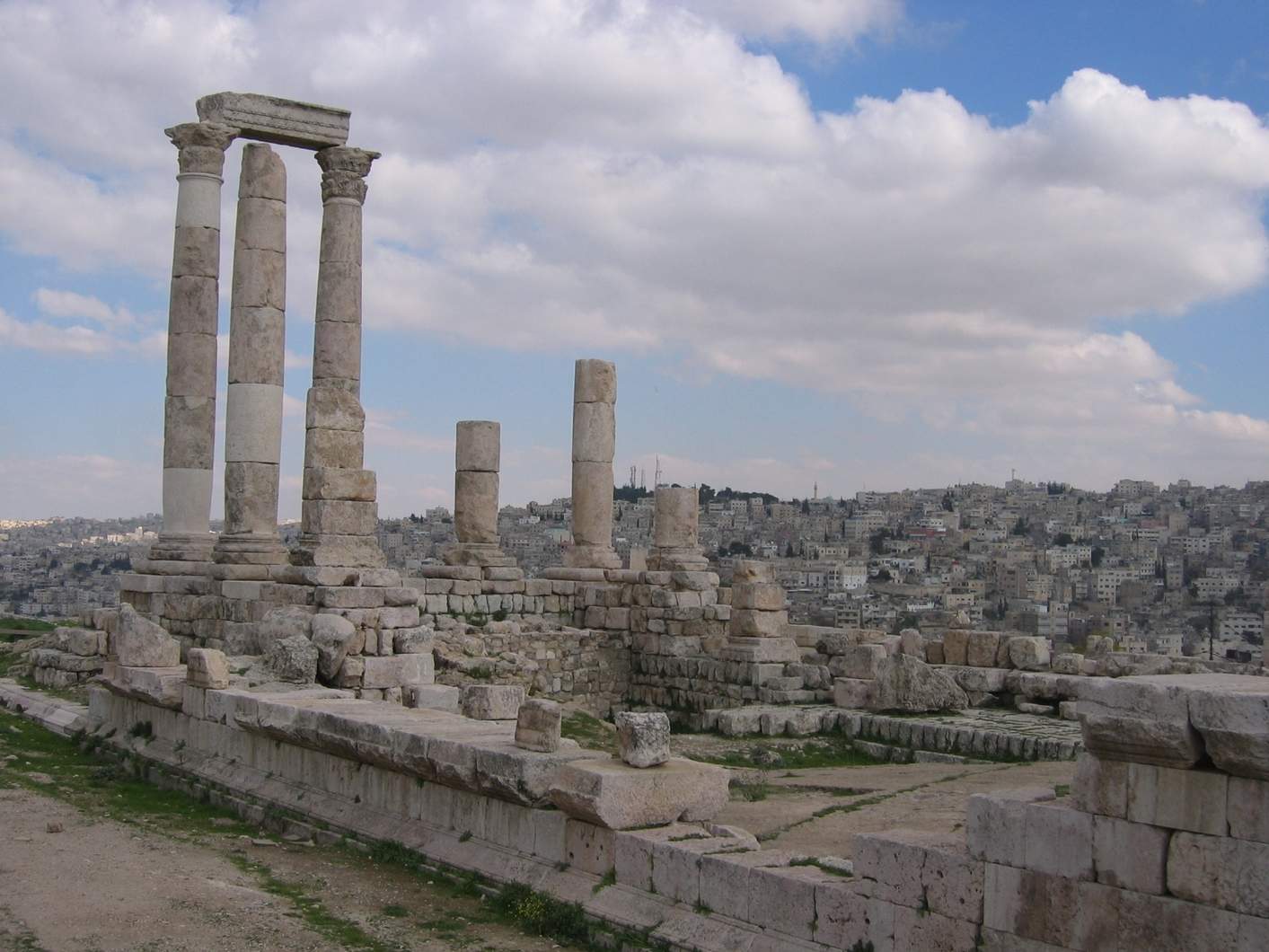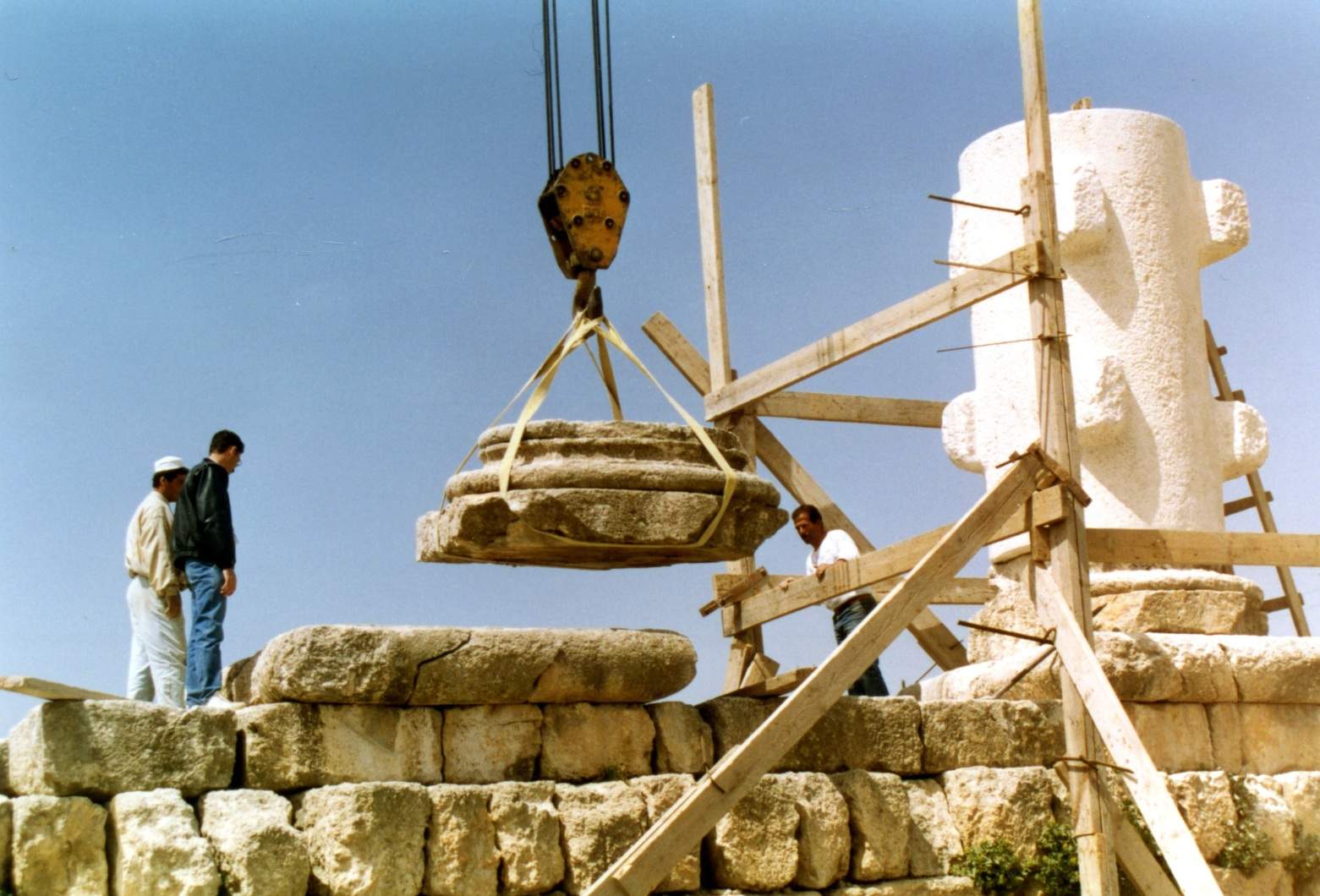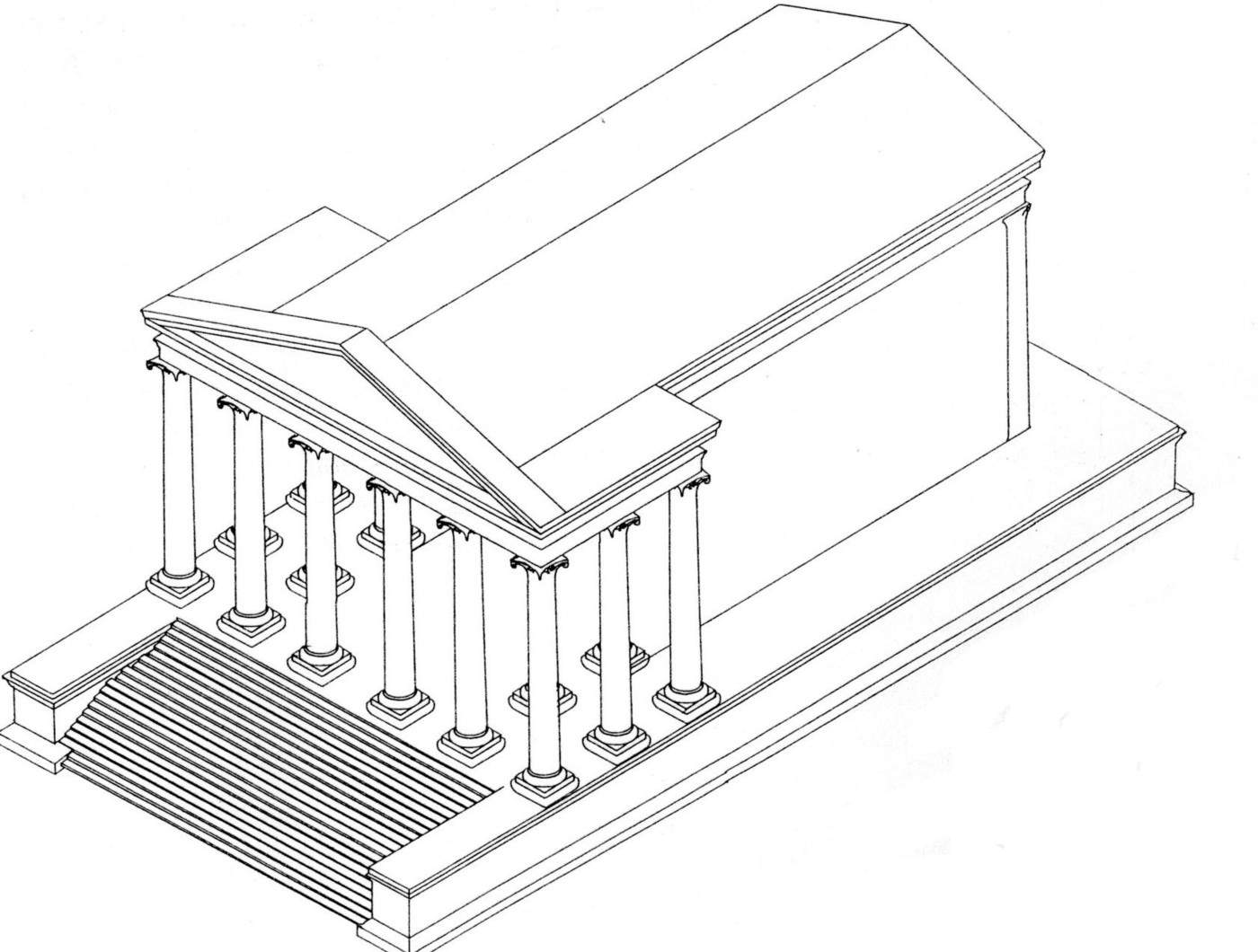
The Roman temple on the Citadel (Jabal al-Qal’a) in Amman is popularly known as the Temple of Hercules. There is no conclusive evidence that it was dedicated to Hercules, but it is securely dated by its dedicatory inscription to the term of the Roman governor Geminius Marcianus (A.D. 161–166). The temple is on the middle terrace of the Citadel within a colonnaded temenos or courtyard. It was oriented along an east-west axis with its facade to the east. The temenos was once connected to the Roman city below by a monumental staircase. The temple had a hexastyle (six columned) facade on a podium measuring 43 x 27 m. The height of the columns, including the bases, is 13.5 m. Each column consists of five or six drums, each weighing up to 11 tons. Detailed analysis of the material remains indicates that while the temple may original have been planned to have columns all around, it was probably not actually built that way.
The ACOR-directed restoration of the temple began in 1992 under the supervision of Chrysanthos Kannelopoulos and engineer Mohammed Tayyem, with funds from the United States Agency for International Development (USAID).
The temple on Jabal al-Qal’a is the most poorly preserved Roman temple in the area. Most of the material of the temple was already robbed out before the earthquake of A.D. 746/47, when the remnants of the structure, including the four remaining columns at the front, collapsed. Over the next nine centuries, the building of fortifications on the Citadel resulted in the reuse of more of its material. It would therefore be impossible to restore the whole monument.

Restoration work focused on the only three areas which were restorable: the portico of the temple, the northwest corner of the platform or podium on which the temple rested, and part of the west temenos colonnade. Fortunately, the temple had a numbering system carved on the drums of the colonnade by the ancient builders; this made it possible to understand the original placement of the drums. Three columns of the temple were found to be preserved and these were restored. One section of the inscribed architrave was restored in its original place as determined from the sequence of the inscription.
The fourth shaft from the south, shaft K, was erected in is original position. Its bottom drum, although preserved, was replaced by a replica. The ancient drum has large cracks, severely flaked edges, and cavities—all caused by the excessive stress during the tilting and oscillation of the shaft in the earthquake. A rough cylinder with eight bosses or knobs, to ease lifting, was shaped out of a block measuring 1.7 x 1.7 x 3.2 m and weighing 27 tons.
The manufacture of the four new drums and their final carving in place is considered one of the major achievements of ACOR’s restoration project. Most of the material was carved with modern equipment, but one drum was shaped from the rectangular block mainly with chisels and hammers. The drum, with a diameter of 1.6 m and a height of 2.1 m, was roughly shaped from a rectangular block by six stone cutters in 40 days.

The restored columns of the Great Temple of Jabal al-Qal’a, together with the sections of the inscribed architrave, now create a focal point for the skyline of Amman. Thanks to ACOR, the capital of Jordan, deprived of the plethora of columns that one can see at other sites such as Jerash, has a reminder of her ancient glory.
ACOR’s Amman temple restoration project was published in C. Kanellopoulos, The Great Temple of Amman I: The Architecture (1994) and in Anthi Koutsoukou, Kenneth W. Russell, Mohammed Najjar, and Ahmed Momani, The Great Temple of Amman II: The Excavations (1997).


Pingback: ACOR Conservation Technician Naif Zaban and the ACOR Conservation Cooperative | The American Center of Oriental Research Blog
Pingback: Jordan’s Cultural Caretakers — SCHEP Launches “Site Steward” Program | The American Center of Oriental Research Blog
Pingback: Why I Support ACOR – A Message from the ACOR Board President - Acor Jordan